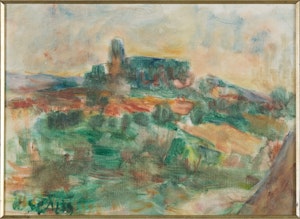Date
19 July, 1997
— 24 September, 1997
Venue
Hocken Collections - Uare Taoka o Hākena, University of Otago Library
Location
Dunedin, New Zealand
Exhibition notes by Louise Sinclair, July 1997:
In the early decades of this century, the evolution of a mature character in New Zealand painting stemmed as much from the departure of young artists overseas as it did from any prospect of their being successfully nurtured at home. The particular reasons motivating individual artists to travel varied, but some were common to all. Many artists felt a frustrating sense of isolation; the geographical distance compounding the artistic separation from Europe. Their feelings were heightened by the perception that the local artworld was confined and provincial in outlook. Such an environment provided scant opportunity for survival, let alone artistic success. The numbers in which they abandoned New Zealand for the north might suggest a form of cultural betrayal. However, the emigration of the artists was a predictable response to the artistic ambitions brought to them by their European teachers notably Girolamo Nerli, Petrus van der Velden and James Nairn. This exhibition includes works from selected first generation expatriate artists with particular emphasis on subjects which indicate the geographical breadth of their European and North African journeys.
The need to broaden the horizon through exposure to and immersion in northern hemisphere cultures has been an impetus felt by artists of succeeding generations. To illustrate this selected works from the northern excursions of Evelyn Page and Alan Pearson are included. Both artists have been eloquent in describing how the experience of particular European countries has been crucial in the evolution of their artistic styles.

![Greniar [Graniers], St Tropez, Southern France image](https://florascales.imgix.net/public/-047-img-BC024-076-59-Greniar-see-ATL-file.jpg?ixlib=js-3.8.0&auto=format&w=300)